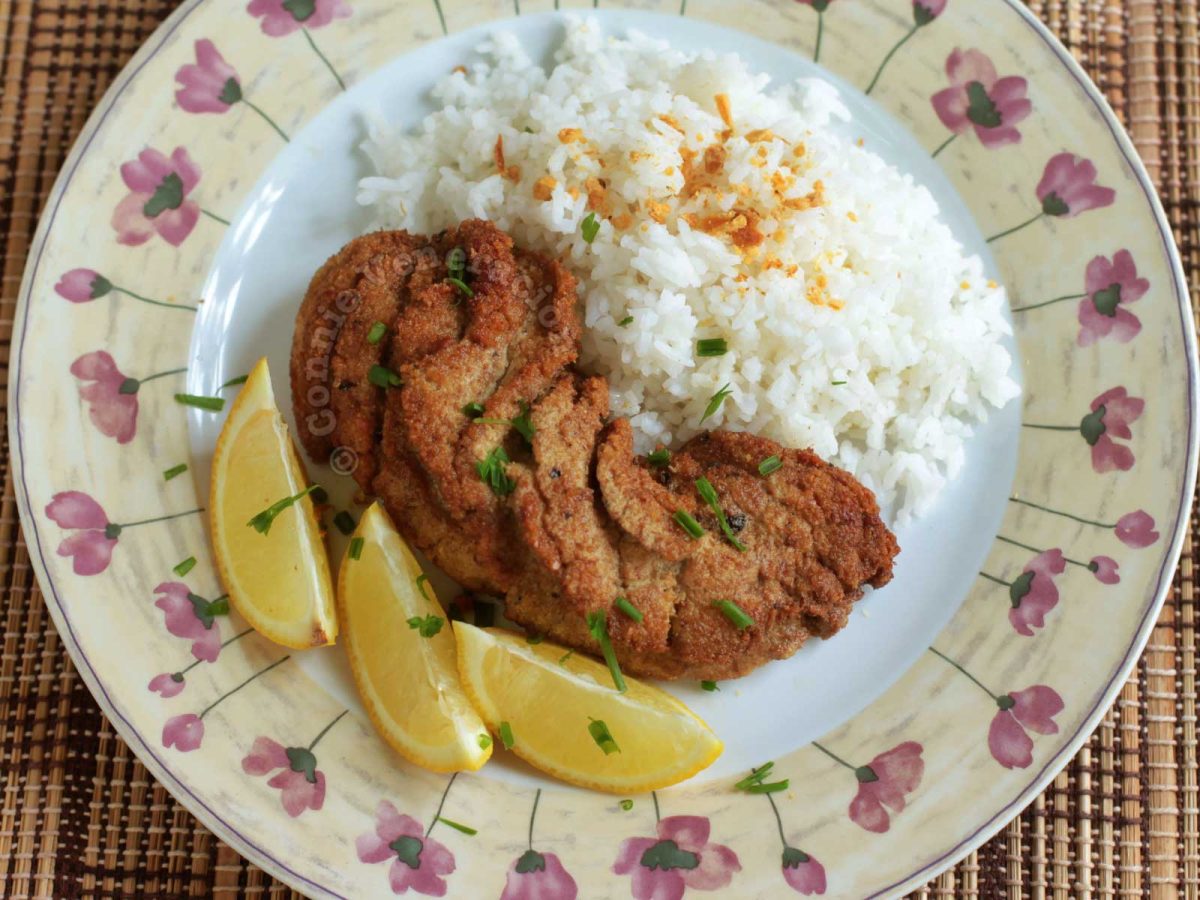Commercially, fish roe refers to the eggs of marine animals including but not limited to tuna, mackerel, mullet, salmon, flying dish and cuttlefish.
Fish roe and fish eggs are terms used interchangeably but you have to broaden your definition of “egg” to understand. Fish roe, or bihod as it is called in the Visayan region of the Philippines, and fish eggs are not the same thing IF by eggs, we mean fertilized eggs.
Fish roe is a bunch of unfertilized eggs and the sacs that encase them are the ovaries. That’s why fish roe come in a pair of sacs like attached twins — a fish has two ovaries.
The roe is released into the water where the unfertilized eggs wait for the sperm released into the water by the male fish to fertilize them. That’s how fish reproduce — by spawning. In the case of bony fish, the kind we eat, it’s called broadcast spawning. I didn’t know all that until I was already a mother with adult daughters.
My love affair with fish roe
As a child growing up in the Philippines, fish roe in their sacs was a treat. My father introduced me to the yellow mass and when he saw how much I enjoyed them, he’d give his share to me. In time, all the fish roe went to me since my brother did not care all that much for them.
By the time I was old enough to tear apart a whole fish, finding fish roe inside became a game with me. I’d pick up a fish and sort of make a wish by saying, “Sana may itlog… sana may itlog (I wish it has eggs… I wish it has eggs).” And actually finding sacs of eggs in the cavity was almost like… it was the same feeling when opening a birthday gift and finding inside something that I had been earnestly wishing for the entire year.
See, back then, I’d look for fish roe in small fish. Large fish were not as common in the market then as they are now. The sacs were two inches or shorter and that made the fish roe even more special. So small, so desirable, so treasured. I’d eat my fish first and save the roe for last. For some reason, the anticipation made them even more delicious, the experience more exciting and the moment more special.
These days, the roe of big fish is sold by the kilo as a stand-alone item. You have a 20-kilo tuna or salmon and you can just imagine how large the sacs are.
How are fish eggs in their sacs cooked?
Did you know that fish roe in sacs are enjoyed in many different ways around Asia? It’s a seasonal delicacy that can be enjoyed only during breeding season.

Frying is the easiest method. To fry the fish roe, I split a sac vertically into two portions. I season the fish roe with salt and pepper, and then fry them, cut side down, in about two inches of very, very, very hot oil for less then three minutes — just long enough to brown the surface and make it crisp but leaving the inside barely cooked through. On the plate, I squeeze a little lemon juice over them and serve them with rice topped with toasted garlic.

I also cook fish egg soup in, oh, so many ways.
Other ways to cook fish roe
But beyond frying fish eggs, cooking them in broth or serving them raw, there are even more delectable ways that fish roe is cooked and served around the world. In India, fish roe is pickled or cooked as a saucy curry dish. Sri Lankan fish egg curry is a drier version.
Fish roe can be served without the sacs too — fresh and raw, or preserved

You’ve seen fish roe, in raw form, in your sushi or in your donburi — black or orange (and, occasionally, yellow or green) spheres, small as pinheads or large as peas, that burst in your mouth when your teeth crush them.
The size of each sphere depends on what fish the roe came from. Fish eggs come in their natural color or they may be tinted — with squid ink to make them black, with yuzu (a citrus) to turn them yellow or with wasabi to give them a greenish hue and a spicy kick.
Preserved fish roe
Fish roe is cured for preservation in two ways. At least, there are two that I know of. If there are other ways, I haven’t tried them yet.
Caviar is salt-cured fish roe
Caviar is roe traditionally from wild sturgeons (Acipenseriformes). Beluga, Ossetra and Sevruga are sturgeons. Today, however, eggs of other fish, including salmon, are made into caviar although there are regulations (some by law) that say caviar can only come from sturgeon. Whichever fish the eggs come from, the eggs are released from their sacs and undergo a salt-curing process both for flavor and preservation. It is this process that turns fish roe into caviar.
In other words, all caviar is fish roe, but not all fish roe is caviar.
Dried fish roe
In Japan and Korea, dried salted mullet eggs in their sac are known as karasumi and eoran, respectively. This delicacy is also found in Taiwan.
In Sarawak, Malaysia, terubuk (Tenualosa toli) eggs are sold fresh or salted and dried.
Did curing and drying fish roe originate in Asia?
The curious thing is that dried fish eggs came from Bottarga, it is called today in English. Despite the Italian-sounding name, it was the Phoenicians (people of an ancient maritime empire in what is primarily modern-day Lebanon) who first dried salted fish eggs in their sacs. The practice spread to Egypt and, from there, to Europe with the spread of the Byzantine Empire, and then back to Asia.







